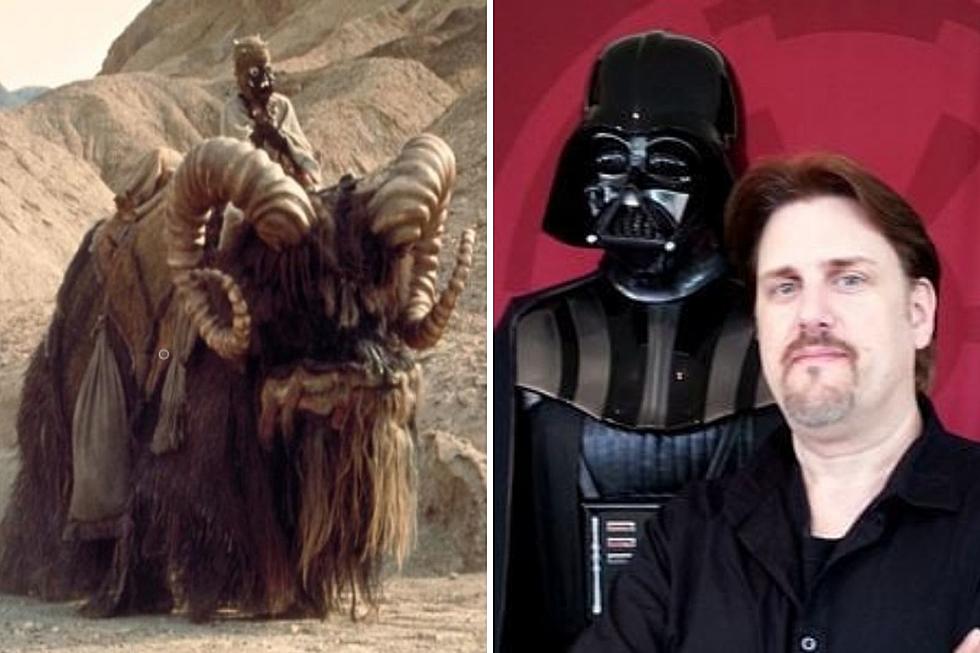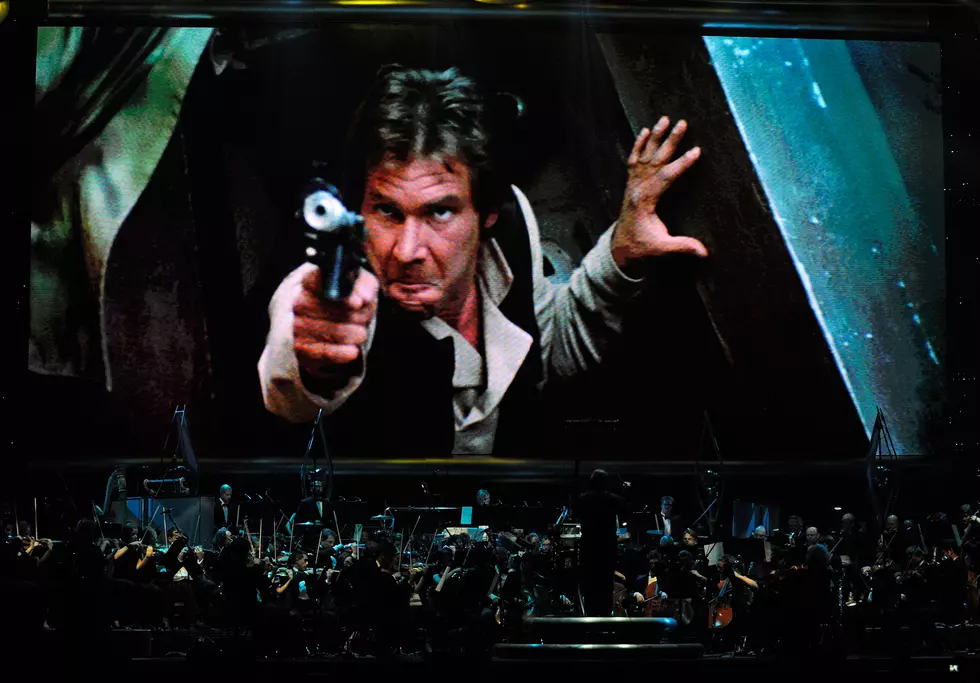
How’d They Do That? A Brief Visual History of Motion-Capture Performance on Film
The use of motion-capture technology to create some of the most fantastical creatures and effects has become revolutionary in recent years, and Andy Serkis has been at the forefront. From acting as a consultant on films through his performance-capture studio, The Imaginarium, to actually portraying these digitally rendered characters, the actor has essentially become the face of this cinematic movement. He returned to the world of the 'Apes' this past weekend to continue the story of one of his most famous characters: Caesar.
Motion-capture performance has certainly come along since it was first utilized, but it seems to be only the tip of the proverbial iceberg. Serkis even said that, with 'Dawn of the Planet of the Apes,' there've been changes in technique since 'Rise of the Planet of the Apes,' and this technology is still evolving.
With 'Dawn of the Planet of the Apes' now in theaters, marking a high point for this art form, we take a look back at some of the most incredible instances of motion-capture performances, and see how this art form has evolved.
The early technology that would come to birth modern motion capture was used as early as the 19th century, when photographer Eadweard Muybridge studied the motion of humans and animals through stop-motion photography. The basic principles of his study would soon serve filmmakers when Max Fleischer invented something called a Rotoscope in 1915. In essence, a camera would project a single frame onto an easel so that the animator could then draw over it, frame by frame, to better capture realistic movement for on-screen characters.
Disney partly used this technology in 1938's 'Snow White and the Seven Dwarves.'
Other films to utilize rotoscoping, even if only in part, were the original 'Star Wars' films, Disney's animated 'Alice in Wonderland,' 1978's 'Lord of the Rings,' and it's still utilized to this day. Of course, the introduction of computers would eventually simplify this process.
More aligned with the motion capture we see utilized today (i.e. 3D computer animation), biomechanics organizations were making strides with this technology to monitor and track the human body's motions for medical research. Early advancements saw multiple cameras synced to a computer as they filmed a subject, while either reflective or bright markers placed on the subject's main points of motion (elbows, wrists, knees, etc.) could help track movements.
While the video game industry would be one of the first to utilize this tech for entertainment purposes, special effects artist John Dykstra would soon take notice and decide to apply it to the Val Kilmer-led 'Batman Forever' to create a digital double for some of the actor's stunts. From there, director James Cameron used motion capture in small ways in 'Titanic,' Ridley Scott used it for 'Gladiator,' and George Lucas used it to create Jar Jar Binks in the 'Star Wars' prequels -- Ahmed Best acted on the set opposite the other performers while wearing a special suit with markers, which was then used to create the digital rendering of the character.
Ahmed Best as Jar Jar Binks in 'Star Wars: Episode 1' (1999)
However, the first film to use motion capture as its primary method was 'Sinbad: Beyond the Veil of Mists' of 2000. Two sets of actors were utilized -- one for the motion-capture performances and the other for the voiceovers. Though, as shown in the trailer below, the technology was nowhere near the same level as today's detailed renderings.
When Andy Serkis came on the scene to portray Gollum in 'The Lord of the Rings' films, Peter Jackson and his visual effects studio, WETA, used a three-stage process to create Gollum. First, Serkis would perform his scenes on set with the other actors, the same scenes would then be performed again without Serkis, and Serkis would finally replicate these same scenes back in the WETA studio while wearing his motion-capture suit and markers.
Andy Serkis as Gollum in 'Two Towers' (2002)
In the studio stage, 25 cameras would be placed throughout the room, shining infrared lights onto Serkis' markers, which would then reflect the light back to the cameras, syncing his motions into the computers and allowing a 3D model of the actor to be rendered. At this time, however, markers weren't placed on the actor's face, and the animators had to study Serkis' facial expressions to create Gollum's features.
In 2004, director Robert Zemeckis dabbled with this technique in making 'The Polar Express' entirely using 3D animation from performance capture. Star Tom Hanks portrayed and voiced many of the characters while working out of a studio. The director would follow-up this film with the motion-captured 'Beowulf' and 'A Christmas Carol,' but did not replicate the same success.
Tom Hanks in 'The Polar Express' (2004)
A year later, Peter Jackson's 'King Kong' debuted, which re-teamed the director with Andy Serkis and also introduced the concept of "facial capture." We previously mentioned that animators could record body motions, but would have to rely on the actors' expressions only as a reference to create digital faces. This all ended when markers were added to Serkis' face to track every muscle movement, and this development would come to influence films moving forward, as seen, for example, in 'Pirates of the Caribbean: Dead Man's Chest.' With 'Pirates,' however, Bill Nighy and the rest of his on-screen deep-sea brethren were actually filmed on set in their motion-capture suits and markers (as opposed to in a studio later on), something that was not common at the time.
Andy Serkis as King Kong (2005)
Bill Nighy as Davy Jones in 'Pirates of the Caribbean: Dead Man's Chest' (2006)
As the technology continued to advance for live-action films, it was still a big hit with animation. For one, renowned tap dancer Savion Glover was enlisted to help with the movements for 'Happy Feet,' which would go on to win Best Animated Feature at the 2007 Oscars.
Savion Glover performing for 'Happy Feet' (2006)
Another milestone was hit in James Cameron's 'Avatar.' By now, wraparound cameras were used to better record facial expressions, and Cameron was using something he called a "virtual camera" -- which streamed the actors' motions in CGI so he could see in real time how their characters looked in the animated world of Pandora -- but it was the realistic details infused into the virtual characters that really set this film apart from the works that came before.
Sam Worthington in 'Avatar' (2009)
Serkis returned to performance capture with his acclaimed role in 'Rise of the Planet of the Apes,' which was arguably the most ambitious use of the technology at the time. Serkis already made leaps in conveying realistic primate movements through his work on 'King Kong,' and his portrayal of Caesar established him as the master of this particular craft.
'Rise of the Planet of the Apes' (2011)
Around the same time, Serkis became dedicated to motion capture and founded The Imaginarium, which would help guide filmmakers in better utilizing this technology. In the following years, more and more films, from 'The Avengers' to 'The Hobbit' trilogy to even Seth MacFarlane's 'Ted' (though motion capture in this instance was only used on a basic level), began tapping into this resource.
Mark Ruffalo as Hulk in 'The Avengers' (2012)
Seth MacFarlane as Ted (2012)
Benedict Cumberbatch as Smaug in 'The Hobbit: The Desolation of Smaug' (2013)
Nowadays, motion capture has never been more utilized, as is apparent in 'Dawn of the Planet of the Apes.' Aside from the actors exhaustively studying and learning to replicate the movements of apes, through what they call "ape school," the motion-capture suits and markers have never been less constraining, allowing for more physical movement. Much like how 'Pirates' was filmed, the actors in the 'Apes' films were actually on location for production, which is a testament to how far the tech has come.
Toby Kebbell as Koba in 'Dawn of the Planet of the Apes' (2014)
Serkis continues as a consultant and actor of motion capture through The Imaginarium, and is involved with two of the biggest blockbusters coming out in 2015 -- 'The Avengers 2' (assisting the creation of Mark Ruffalo's Hulk and portraying a character of his own) and 'Star Wars: Episode 7.'
More From Rock 96.7










